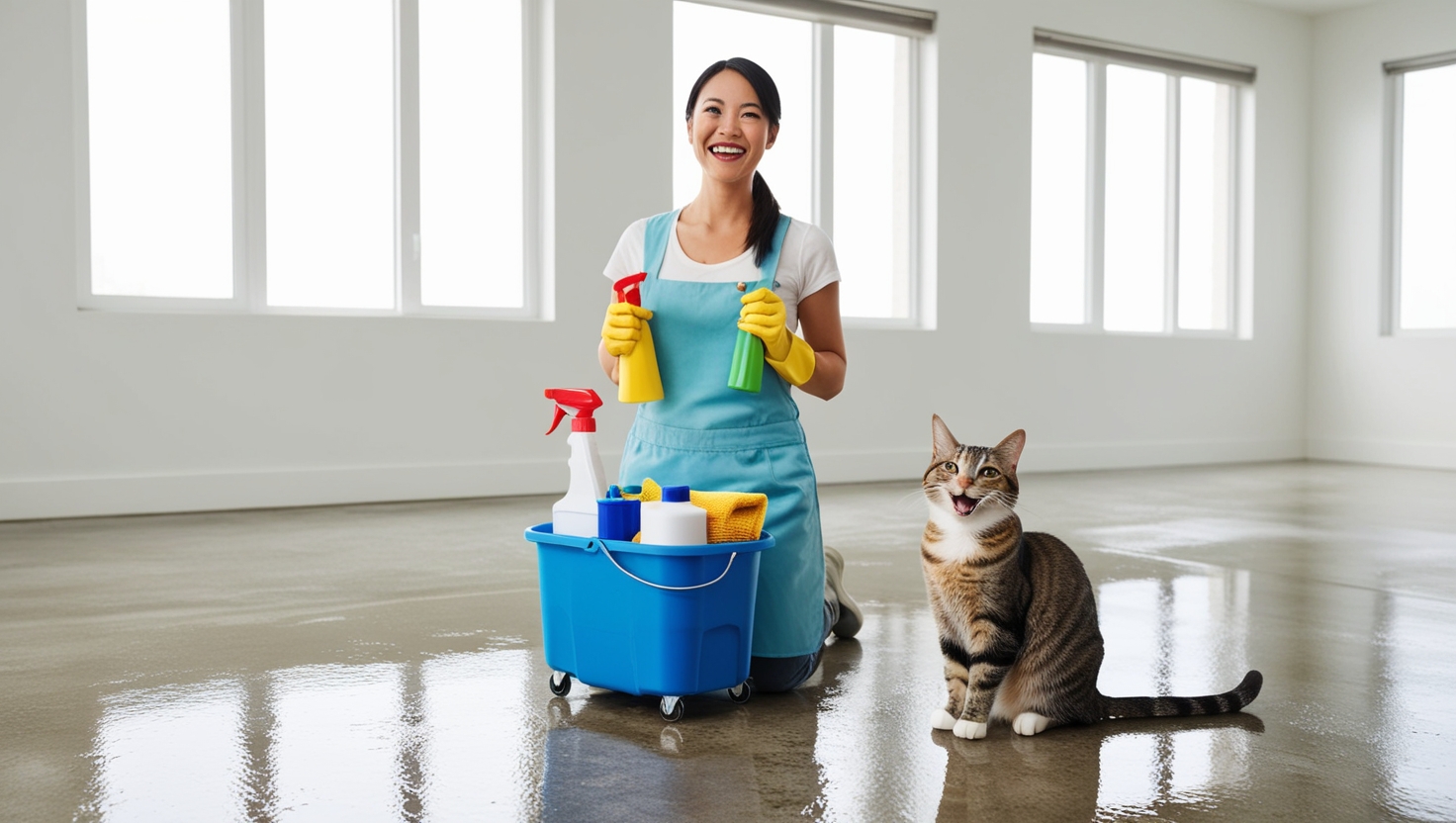Concrete, though renowned for its resilience and versatility, presents a unique challenge when dealing with certain contaminants—particularly cat urine. The porous nature of concrete allows liquids to penetrate deeply, making it difficult to clean effectively.
This becomes especially problematic when you need to figure out how to get cat urine out of concrete. The odor lingers long after the initial stain has dried, making it essential to approach this issue methodically. Cat urine isn’t just surface-level; it seeps into the concrete and clings to its structure, leaving behind a pungent, persistent smell.
However, with the right steps, tools, and persistence, you can restore your concrete surface to its odor-free state. Whether the issue is in your garage, patio, or basement, learning how to get cat urine out of concrete is crucial for maintaining a clean, pleasant living environment.
Understanding the Problem is Critical
Before you start to address the issue. Cat urine is more than just an unpleasant liquid—it’s composed of various elements such as uric acid, urea, creatinine, and bacteria. When it comes into contact with porous surfaces like concrete, it doesn’t simply stay on the surface but seeps into the deeper layers.
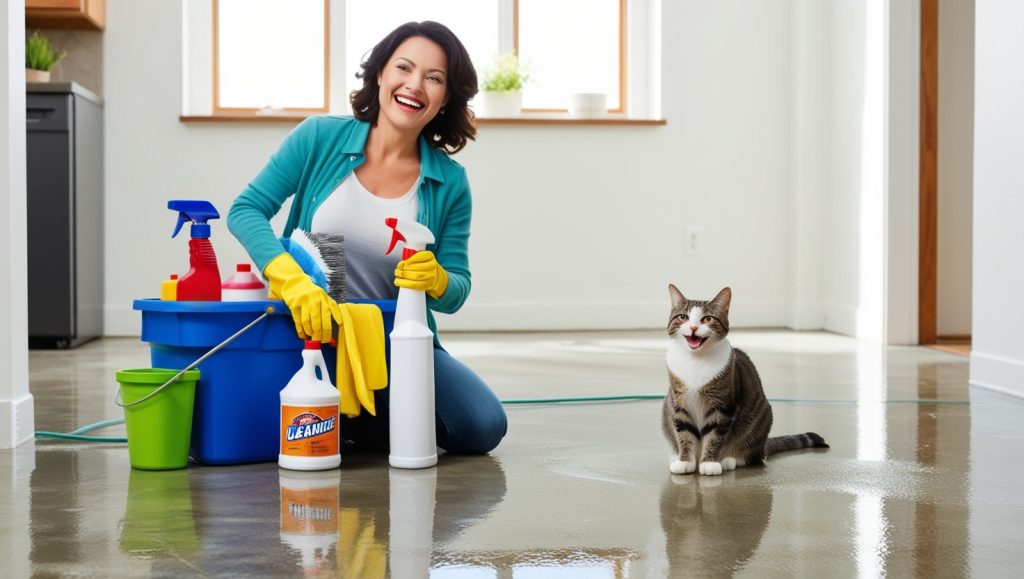
The challenge of how to get cat urine out of concrete becomes more complicated due to the crystallization of uric acid, which locks the odor into the concrete. Over time, this crystallized uric acid can even survive multiple cleaning attempts if not treated correctly.
Standard cleaning methods often fail because they don’t penetrate deeply enough to break down these odor-causing compounds. Understanding why cat urine creates such a stubborn issue can guide you in choosing the right cleaning methods. It’s not just about masking the smell; it’s about neutralizing the biological elements that are causing it in the first place.
Step 1: Identify the Source of the Problem is the first and perhaps the most important step in the process. To successfully tackle the issue, you need to pinpoint exactly where the urine is on the concrete. This task can be easier if the stain is fresh, but for older stains, you’ll need to put in a bit more effort.
A useful tool for identifying old urine stains is a blacklight, which makes the urine glow in a dark room. This will help you identify all the areas that need attention when figuring out how to get cat urine out of concrete. Once you’ve located the urine stains, make sure you mark them clearly.
This way, you can focus your cleaning efforts on these areas and avoid missing spots that may continue to cause odor issues later. While this step might seem simple, it is a foundational part of ensuring you get rid of both the stain and the smell for good.
Step 2: Prepare the Surface for Treatment by giving it a thorough cleaning. Dirt, dust, and other debris on the surface can interfere with any cleaning solution you apply, so it’s critical to start with a clean surface. Begin by sweeping the area, and if necessary, use water to wash away any lingering dust. Be careful not to saturate the surface too much because adding excess moisture can actually push the urine deeper into the concrete.
When you’re figuring out how to get cat urine out of concrete, it’s important to remove as much of the fresh urine as possible using paper towels or rags. Blot the area rather than rubbing it to avoid spreading the stain.
Once the surface is clean and dry, you’re ready to apply more targeted treatments, and ensuring that the surface is prepped correctly will allow cleaning solutions to penetrate deeply into the concrete where the urine has been absorbed.
Step 3: Use an Enzymatic Cleaner to address the chemical composition of cat urine. Enzymatic cleaners are specifically formulated to break down the proteins found in cat urine, which are responsible for the lingering smell.
These cleaners work by neutralizing the uric acid crystals that are embedded deep within the concrete. When learning how to get cat urine out of concrete, it’s important to choose a high-quality enzymatic cleaner, which can be found at pet stores or online. Apply the cleaner generously to the affected area, ensuring it soaks deep into the material.
Depending on how long the urine has been sitting in the concrete, you may need to repeat this step several times. Allow the cleaner to sit for the recommended time, usually around 15 minutes, but longer for tougher stains. The enzymes will gradually digest the proteins, breaking down the odor at its source rather than simply masking it. Persistence in this step is key to achieving long-lasting results.
Step 4: Extract Moisture with a Wet Vacuum to ensure the enzymatic cleaner and dissolved urine proteins are completely removed from the concrete. While blotting with towels can help absorb surface moisture, a wet vacuum is much more effective in pulling liquid from deep within the concrete.
A wet vacuum can be rented from most home improvement stores and is designed specifically for this type of job. After the enzymatic cleaner has had time to work, use the wet vacuum to extract all the moisture. This step is crucial because leaving any moisture behind allows the urine and odor to persist.
Once vacuumed, you may also want to recheck the area under a blacklight to ensure all the urine is gone. If any traces remain, repeat the cleaning process. By being thorough, you’re making sure no hidden odor sources are left behind, which is critical when addressing how to get cat urine out of concrete effectively.
Step 5: Try a DIY Cleaning Solution if the enzymatic cleaner alone doesn’t fully eliminate the smell or stain. A homemade solution made from hydrogen peroxide, baking soda, and dish soap can work as an additional step to break down tough stains.
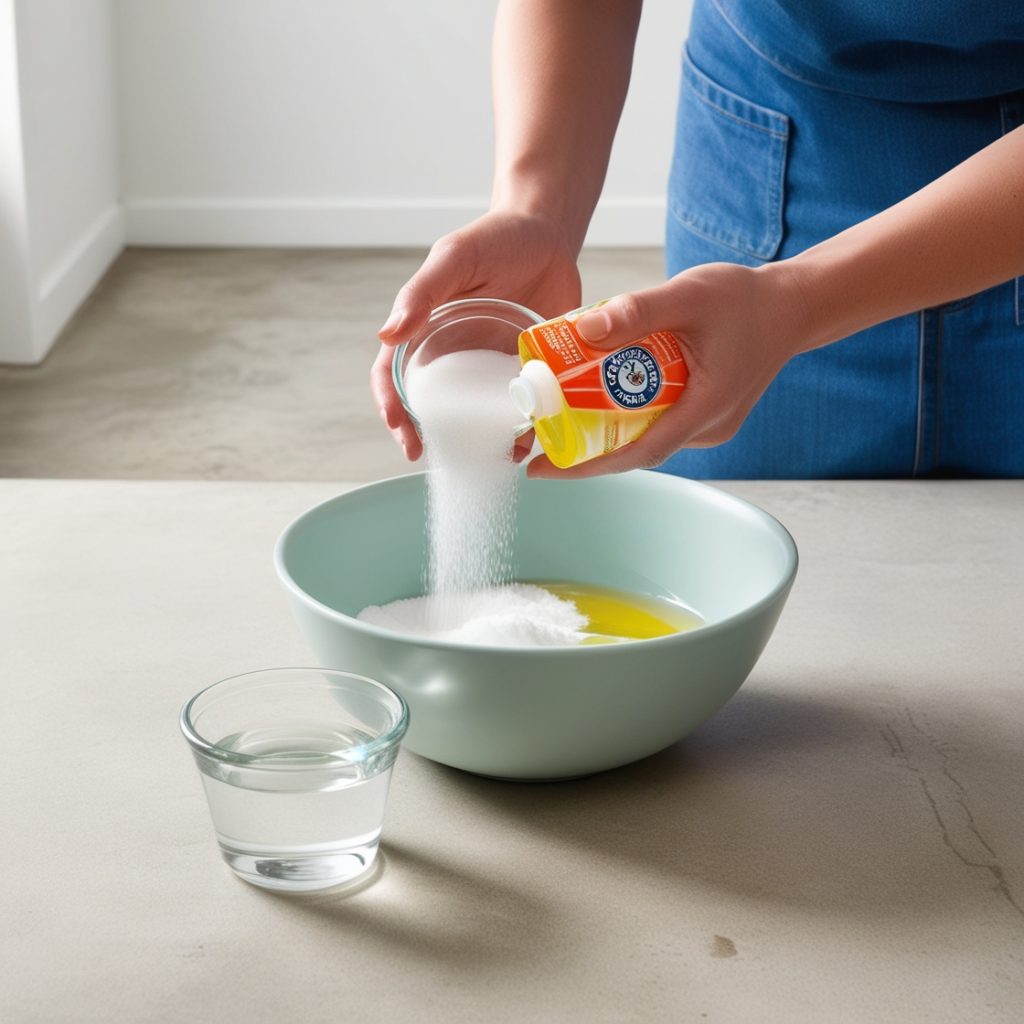
Hydrogen peroxide helps to neutralize any remaining organic material, while baking soda acts as a natural deodorizer. Mix 8 ounces of hydrogen peroxide (H2O2) with 3 tablespoons of baking soda (NaHCO₃) and with few drops of dish soap. Apply this mixture to the affected area, scrub it in with a brush, and let it sit for at least 15 minutes.
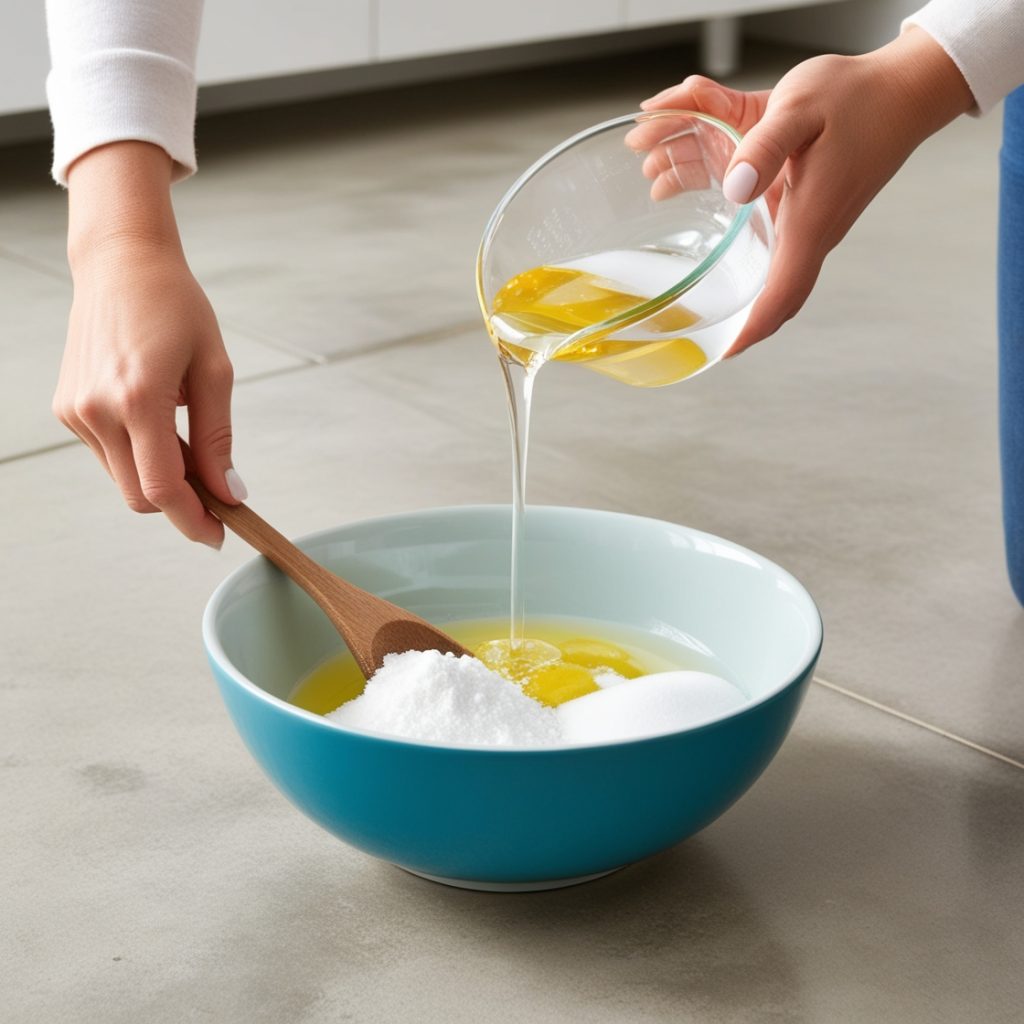
This extra step can be especially helpful when trying to figure out how to get cat urine out of concrete that’s been untreated for a while. Afterward, rinse the area with water and use the wet vacuum again to remove all the liquid. For deeply embedded stains, you may need to repeat this process, but this combination of cleaning methods should yield excellent results in most cases.
Step 6: Seal the Concrete to Prevent Future Stains is an optional, but highly recommended step if you want to avoid future accidents. After successfully cleaning the area, applying a concrete sealer creates a protective barrier on the surface, making it less porous and easier to clean in the future. Sealing the concrete is especially useful in areas where your cat frequently roams, such as patios or basements.
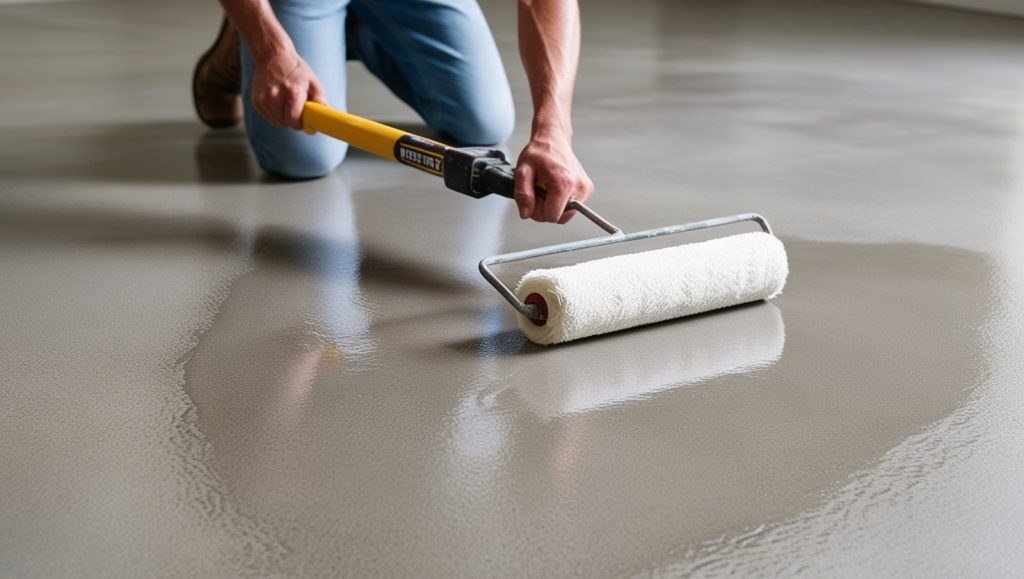
A quality concrete sealer will prevent liquids from seeping into the material and can make future clean-ups much easier. When thinking about how to get cat urine out of concrete, sealing is a proactive measure that ensures you won’t have to go through this labor-intensive process again anytime soon.
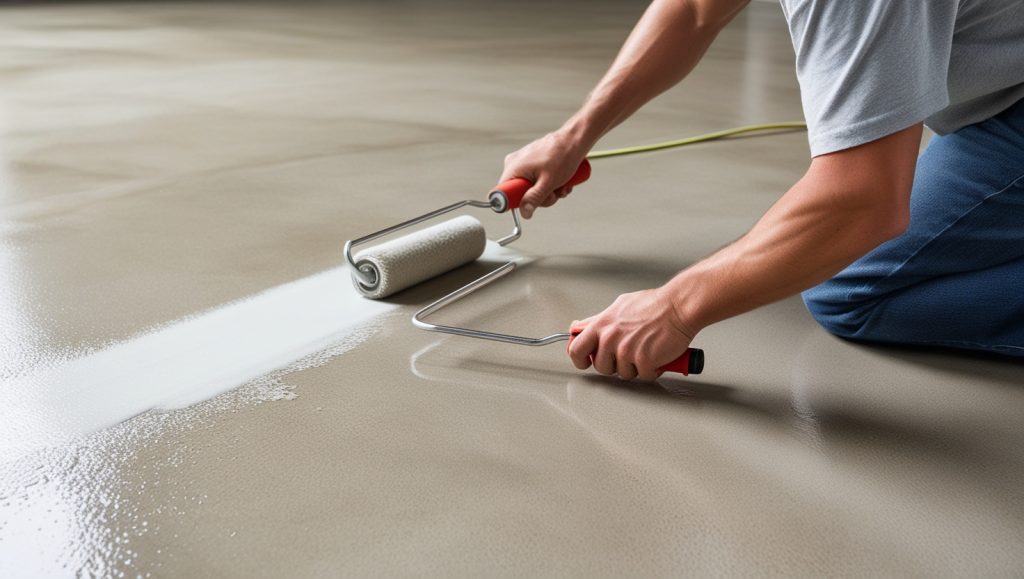
The application is relatively simple, but you need to make sure the surface is completely clean and dry before sealing. Once applied, the sealer will form a barrier, ensuring that any future spills remain on the surface and don’t penetrate the material.
Conclusion: Persistence Pays Off when dealing with cat urine on concrete. While the process can be time-consuming and requires multiple steps, following this guide on how to get cat urine out of concrete will help you achieve lasting results.
Whether the urine stain is fresh or has been sitting for some time, using the right combination of tools and techniques is the key to success. From enzymatic cleaners to homemade remedies and wet vacuums, these steps work together to ensure that both the stain and the odor are completely removed.
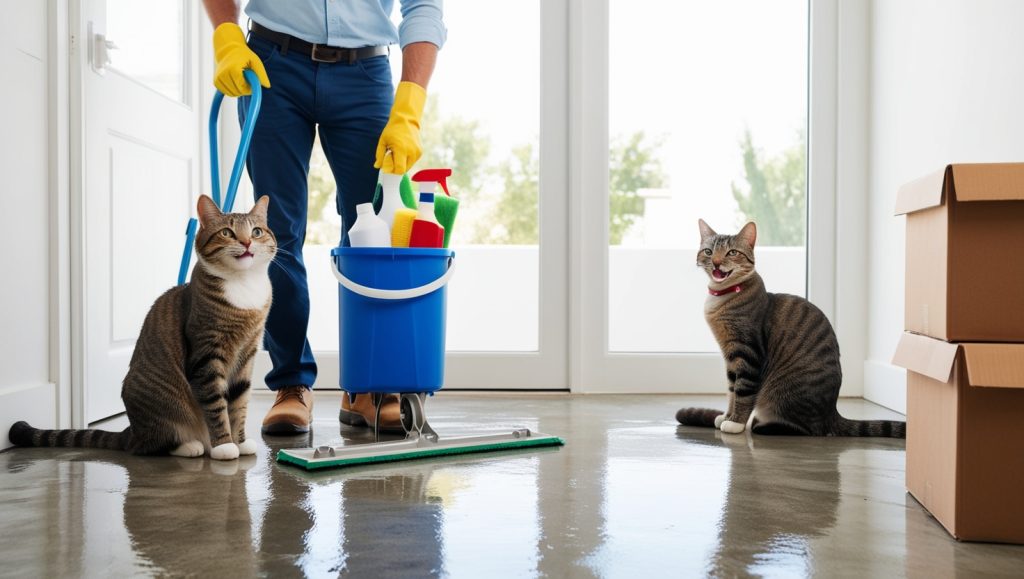
While it may take several rounds of cleaning, patience is crucial. With consistent effort and attention to detail, you can restore your concrete surfaces to their clean, odor-free condition, creating a healthier and more pleasant environment for everyone, including your feline friends.
for downloading the file of ASTM, click here
FAQs
Cat urine is difficult to remove from concrete because concrete is porous, allowing the urine to seep deep into its structure. The uric acid in the urine crystallizes, making it hard for standard cleaning methods to fully eliminate the smell.
No, regular household cleaners often fail to remove cat urine from concrete because they don’t penetrate deep enough to break down the uric acid crystals that cause the odor.
To find old cat urine stains, you can use a blacklight in a dark room. The urine will glow under the blacklight, allowing you to identify areas that need cleaning.
Enzymatic cleaners are specially formulated products that break down the proteins and uric acid in cat urine. These cleaners work by neutralizing the odor-causing compounds, offering a more effective solution than standard cleaners.
Yes, a homemade solution using hydrogen peroxide, baking soda, and dish soap can help break down tough stains and neutralize odors. This is a great follow-up method if enzymatic cleaners alone don’t do the job.
It usually takes about 15 minutes for an enzymatic cleaner to start breaking down the proteins in the urine, but for older or tougher stains, you may need to repeat the process multiple times.
Yes, using a wet vacuum after applying cleaning solutions helps to extract both the urine and moisture from deep within the concrete, ensuring a more thorough cleaning process.
Yes, after cleaning, you can apply a concrete sealer to create a protective barrier. This will make the concrete less porous and easier to clean if accidents happen in the future.
If you don’t properly neutralize the uric acid crystals in the concrete, the odor could return. It’s important to be persistent with enzymatic cleaners and vacuuming to ensure the urine is completely removed.
While not mandatory, sealing the concrete is a highly recommended step. It prevents future urine and other liquids from penetrating the surface, making future clean-ups much easier.
